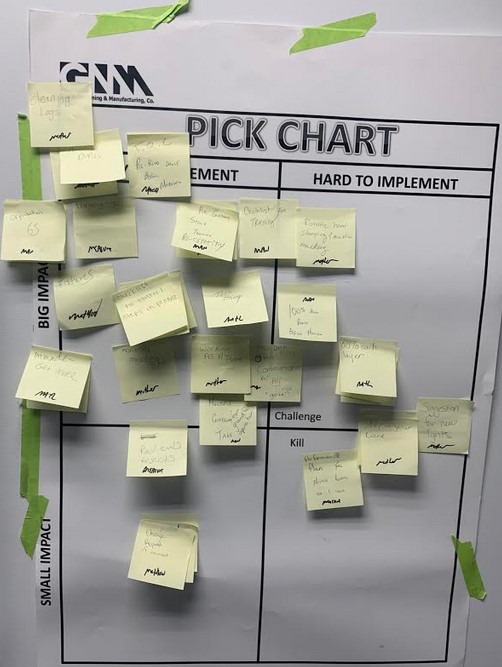The yes… and… principle is great to keep top of mind so you don’t negate someone’s idea or input into a conversation. Let’s say that you are conducting a brainstorming activity, and someone brings up an idea. When someone responds with okay or that won’t work which will kill the entire process, answer instead with yes….and….
Those simple two words communicate that I heard you, I am present with you, and please continue with another thought or idea. Those two words open the door for further ideas and communication from the rest of the group allowing you to move forward together. No one solves a problem or has the best idea thirty seconds into the ideation process. You want to create a culture of yes…and… instead yes but, or some other answer.

Let’s take Jeff Bezos as an example. In the beginning, I’m sure that he was thinking about items that could easily be stored, wouldn’t expire, could survive shipping and would have constant demand. He initially came up with books but applied the yes…and…principle to brainstorming. What else could be shipped after learning the processes that enable shipping books in an efficient manner? Yes….and…how about shipping everything? The Yes…and…principle I’m sure allowed Amazon to become the sales and logistics juggernaut that it is today. How can you use this process to improve your brainstorming and engagement?
1. Say yes…and…
Try communicating with these two words to keep brainstorming moving along and engaging your employees. It shows you want to hear more from them and increases engagement.
2. Be flexible in brainstorming
It’s hard to be creative when you are rigid. Your brainstorming and creative process will be more authentic if you are flexible and will do a better job of meeting your customer’s needs of tomorrow not yesterday. Allow the creative process to flourish and then filter the many ideas through an impact/effort matrix or P.I.C.K. chart to narrow down the best options for implementation. Develop an MVP and try it with targeted customers to gain feedback.
3. Use a ready fire aim process in your new product development
If you are able, try solutions before they are fully ready to get feedback from your target audience. This is referred to as an MVP or Minimum Viable Product and is often used in the software industry. Given 3D printing capabilities today, can you develop MVPs for manufactured products? The feedback you receive from early prototypes will help you understand if your customer assumptions were correct.
4. Give up attachment to preconceived ideas
Especially when brainstorming you want to allow the group to be as creative as possible without having a solution in mind. When you agree on a course of action make sure you commit and take action. Everyone has great ideas, but those that act upon them are the ones that win in the marketplace.
These are a few observations to keep in mind as you begin your Lean journey and the wonderful impact it can have on your culture!
As always it is an honor to serve you. I hope that you and your company are getting better every day!
Follow me on Twitter
Join me on LinkedIn
Listen to the podcast here
